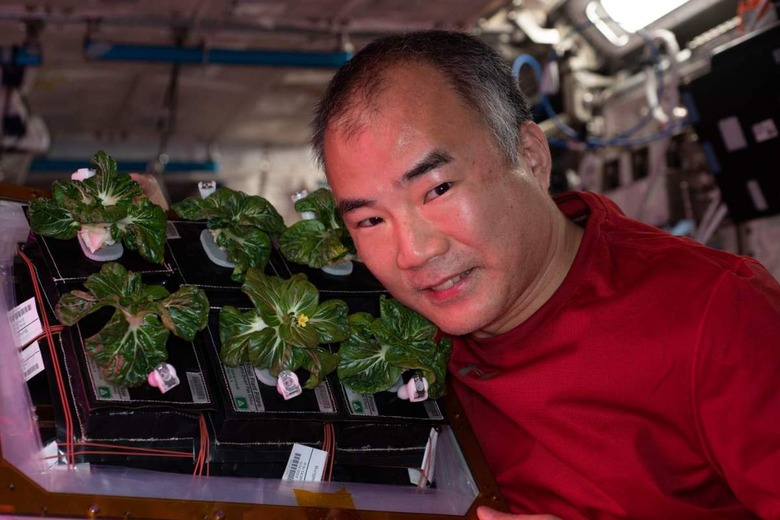ISS Astronauts Get To Enjoy Homegrown Leafy Greens
Astronauts aboard the ISS have been working on a NASA program that involves growing fresh vegetables aboard the ISS. One of the biggest challenges of sustained human presence in space is producing enough food. Astronauts on the ISS recently enjoyed a fresh supply of leafy greens thanks largely to Expedition 64 crewmember Michael Hopkins.
Hopkins is the SpaceX Crew-1 mission commander, and when he arrived at the ISS, he took the lead in conducting Vegetable Production System experiments. The last two of those experiments ended on April 13 with a harvest of VEG-03K and VEG-03L. Those experiments tested a new space crop of "Amara" mustard and a previously grown crop of "Extra Dwarf" pak choi. Both crops are grown for 64 days, which is the longest duration for the growth of leafy greens aboard the ISS so far.
The pak choi grew for so long that it began to flower as part of its reproduction cycle. Hopkins used a small paintbrush to pollinate the flowers deciding on that approach after speaking with a space crop production scientist and science lead for the plant experiments back on Earth. The experiment was important because fruit crops require pollination, and crewmembers must understand how the process works in microgravity and eventually in reduced gravity.

In the future, pepper seeds will be sent to the space station as part of the Plant Habitat-04 experiment. The seeds will be sent to the ISS aboard SpaceX 22nd Commercial Resupply Services mission and will be grown in the Advanced Plant Habitat. VEG-05 experiment with dwarf tomatoes is also being planned for next year. Researchers conducted multiple harvests in the recent experiments to maximize the amount of produce Hopkins grew and the crew ate the greens to add variety to their meals.
